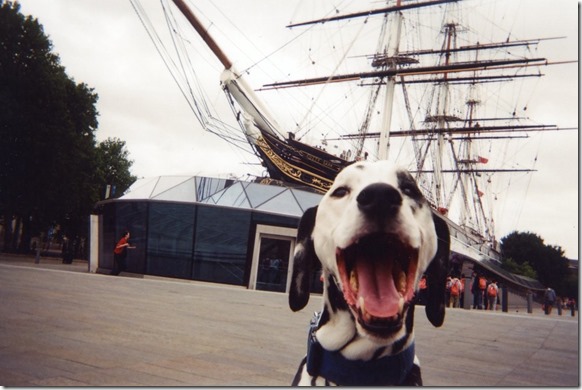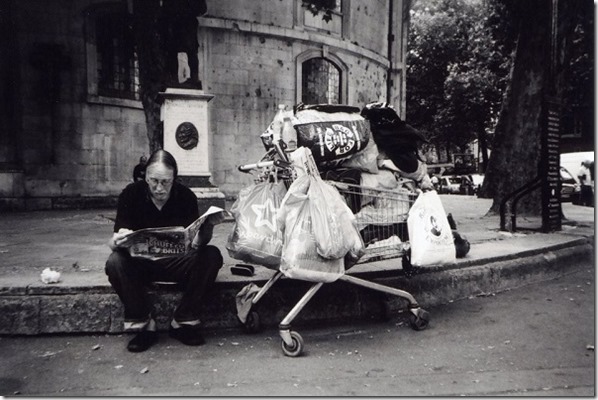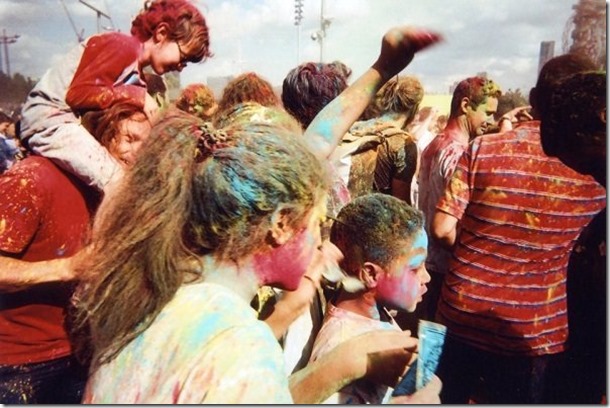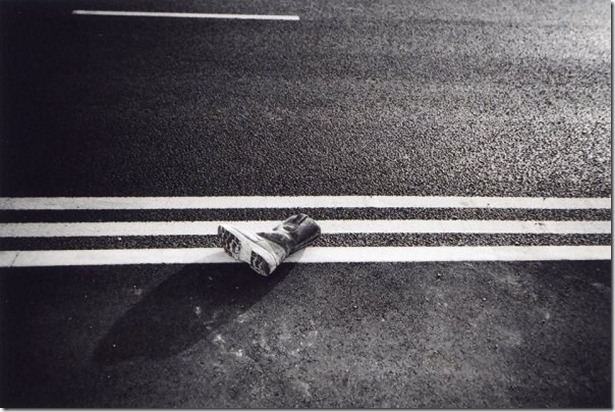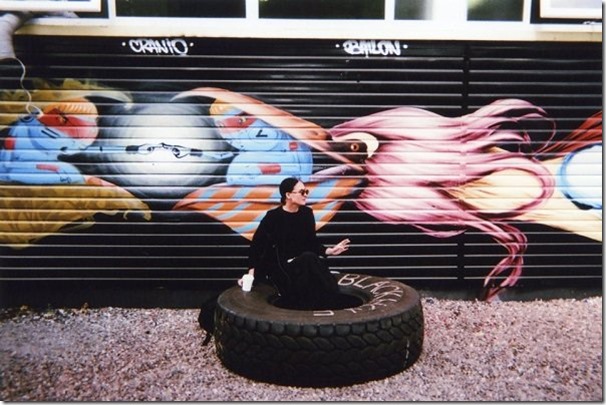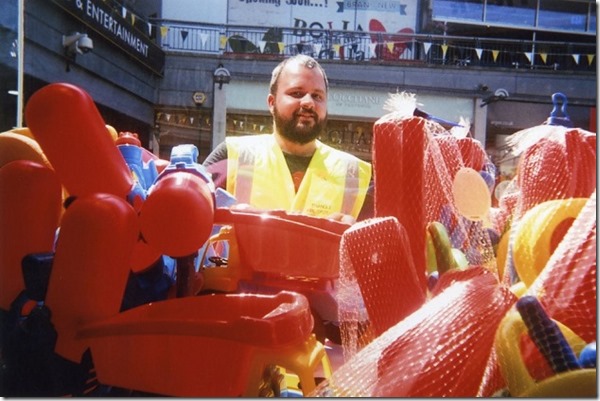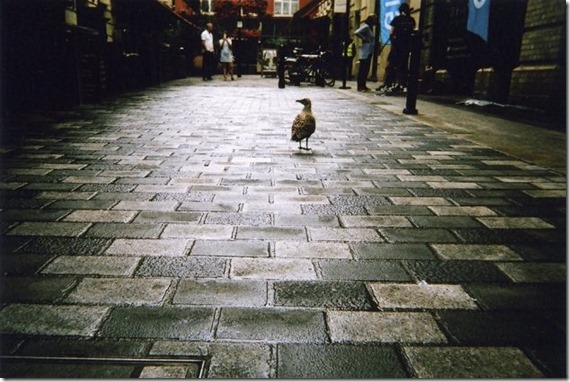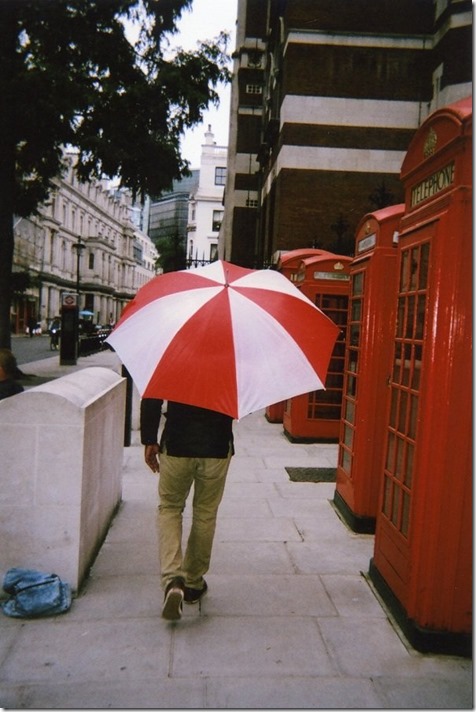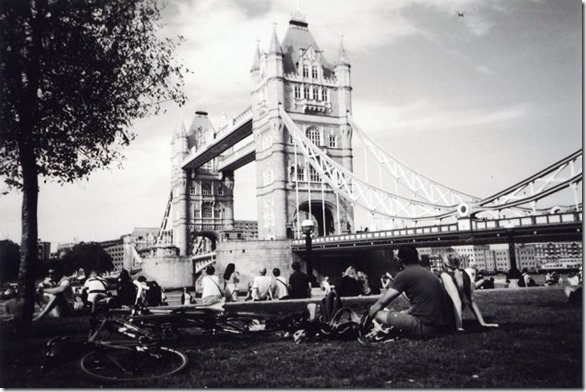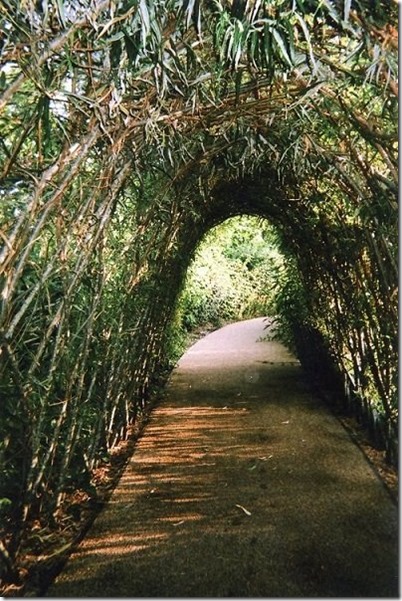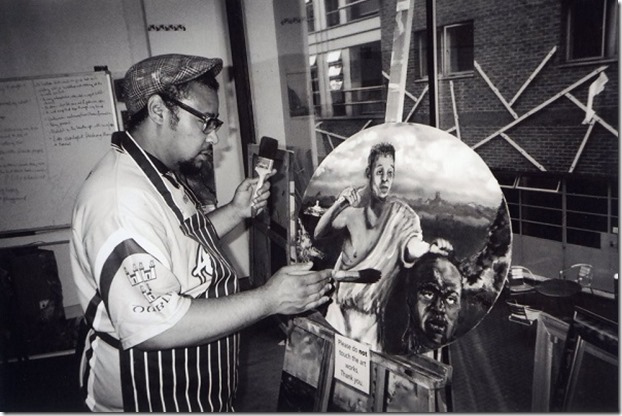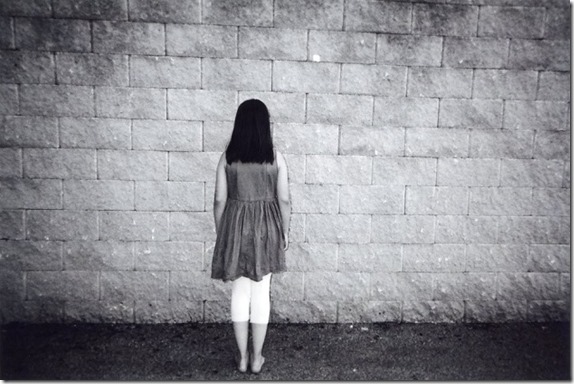‘There are millions of people living in this city, but the views that are shown in this calendar are unique.’ – Paul Ryan, Cafe Art co-founder
Café Art connects people affected by homelessness with the wider community through art, and for its latest project, handed out 100 FujiFilm single-use cameras to people affected by homelessness, asking them to capture simply ‘My London’.
80 cameras were returned and over 2,500 photos were developed, which were then whittled down to 12 by an expert panel and public votes to form a calendar.
The final 12 are a fascinating and poignant view of the capital. One focuses on the clash of modernity, with the Gherkin juxtaposed with an old church, others observe youthful frivolity from the outside, while several focus on animals, perhaps highlighting the alienation many homeless people must feel with other humans.
“Mr Bond and the Cutty Sark, Greenwich,” by photographer ROL. This photo will be the cover image for the 2016 calendar, Cafe Art says.
Bags for Life, Strand, by David Tovey
Colour Festival, Olympic Park, by Goska Calik
Left Boot, East London, by Ellen Rostant
Tyre Break, Hackney, by Desmond Henry
Yellow and Red by Frances Whitehouse
West End Bird, Westminster, by Zin
London Calling, Lincoln’s Inn, by XO
Tower Bridge Picnic, Southwark, by Ceci
Light at the End, Stratford, by Ellen Rostant
The Artist, Whitechapel, by Michael Crosswaite
Faceless Child, East London, by Ellen Rostant
“We have several goals: helping people affected by homelessness to be empowered, not only through photography and art, but through connecting with the public,” Cafe Art said.
“The calendar also has a goal of telling stories from individuals who are affected by homelessness, thereby raising awareness in the general public about issues from a personal perspective.
“All the money raised goes back into the project, either to pay for the printing of the photographs and calendar, rewarding the winning photographers, buying art materials for art groups affected by homelessness or helping individuals attend art courses. Art is seen as a major way for people to recover from the trauma of being homeless.”
Information’s from: Independent

